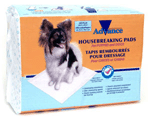|
HOUSEBREAKING & PROBLEM SOLVING
|
|
|
|
This is the section of the website where you will find some solutions and tips to a few of the more common housebreaking and problem solving issues. To make things easier, simply click on the links below that relate to the problem you are having with your dog. For info on the actual training of behaviors such as SIT, STAY, HEEL etc..., check out my 7 Behavior Dog Training DVD. This is one of the best selling products on my website.
|
|
TRAINING RESOURCES
|
|||
|
My new book, "TAKE 2, Training Solutions for Rescued Dogs" came out last week and is now available. This book will help you deal with problem solving issues you might encounter with your dog. Here are some of the issues: |
My book, "What Color is Your Dog?" came out last year, and focuses on two aspects of my dog training philosophy. Building a great relationship with your dog PRIOR to dog training, and training your dog based on personality. | ||
|
FEAR OF PEOPLE
|

|
UNDERSTANDING YOUR DOG'S COLOR
|

|
|
FEAR OF MOVING OBJECTS
|
SIT
|
||
|
FEAR OF STATIONARY OBJECTS
|
STAY
|
||
|
BARKING
|
COME
|
||
|
AGGRESSION
|
THE WORD "NO"
|
||
|
RUNNING OUT THE DOOR
|
|||
|
JUMPING ON GUESTS
|
|||
|
SEPARATION ANXIETY
|
|||
|
SIT
|
|||
|
STAY
|
|||
|
COME
|
|||
|
HEEL
|
|||
|
THE WORD "NO"
|
|||
|
JUST CLICK ON THE BEHAVIOR PROBLEM FOR SOME TRAINING TIPS
|
|
|
HOUSEBREAKING A dog relieving himself in the house is probably the most common of all the behavioral issues a new owner may have with his pet. When a dog is brought into a new home he will almost always want to relieve himself, and then repeat the same behavior in the same area of the home. This is why the biggest mistake a new pet owner can make is to let his dog roam free in the house the second he brings him home. Think about this from your dog’s perspective. If you let him loose to roam free in your house the minute you bring him home, why would he not relieve himself in the house? He hasn’t been taught any differently. 'A BIG MISTAKE' One of the biggest mistakes you can make is to do something negative to your dog when he has urinated or defacated in the house. It's history.. and you have to move on and learn from it. It is a learning experience for you. You have now learned that you cannot give your dog the opportunity to be loose in that area of the home unsupervised. Anything you do negatively physically is an absolute waste of time, and will only jeopardize your relationship with your dog. Here are two great ways to housebreak your dog! The first involves "pads", and the other involves "crate training". You can either one, or both. In recent years I have become more and more of a huge fan of these absorbant housebreaking pads for dogs. These especially work great if you live in an area that is known for being very cold outside during the winter, and you have a very small dog that does not like the cold. Rather than taking your dog outside, you might just want to teach your dog to use these pads in a certain area of the house. Another great thing about using these pads is that once this is trained, you no longer need to worry about rushing home from work and expecting your small dog to "hold it in". The way you want to teach your dog to use these pads would be to start by confining him to a smaller area that is pretty much covered with these pads except for his crate or place to sleep when you are gone. When you first start with the training, the key is to not give the dog the opportiunity to relieve himself on anything other than the housebreaking bad. Over the course of time, as the dog begins to understand, start covering less of the area the dog or puppy is in. If the animal continues using the pad, make the area a little smaller each day. You might now be covering 25% of the area with the pads. Once that happens, you want to continue to make the area even smaller. You want to get to a point where one pad is covering the area. When your dog is consistent with that, the behavior is trained. Tip: Before you start training this behavior, make sure the pad is in the same area you are going to want it in when the behavior is trained. CRATE TRAINING The whole idea behind CRATE TRAINING is simply to not give your dog the opportunity to develop the behavior of relieving himself on your wool carpet or Brazilian cherry wood floor in the first place. Unlike people, most dogs are quite comfortable in dens or areas that are confined, like a crate. Although a dog might whine or bark initially, he should eventually become comfortable in there. A QUICK TIP ON CRATE TRAINING: Start putting something in the crate that your dog likes such as a small piece of his favorite treat. Condition your dog into staying in the crate for longer periods of time each day. Over the course of time, the animal will eventually be conditioned to stay in the crate long enough to feel comfortable sleeping in it overnight. Remember that housebreaking is a behavior that BEGINS OUTSIDE. |




